Skip to the content
Participant Details
- Community Arts Partner Name
- Gregory D Stump
- Partner Type
- Individual
- Profile Photo
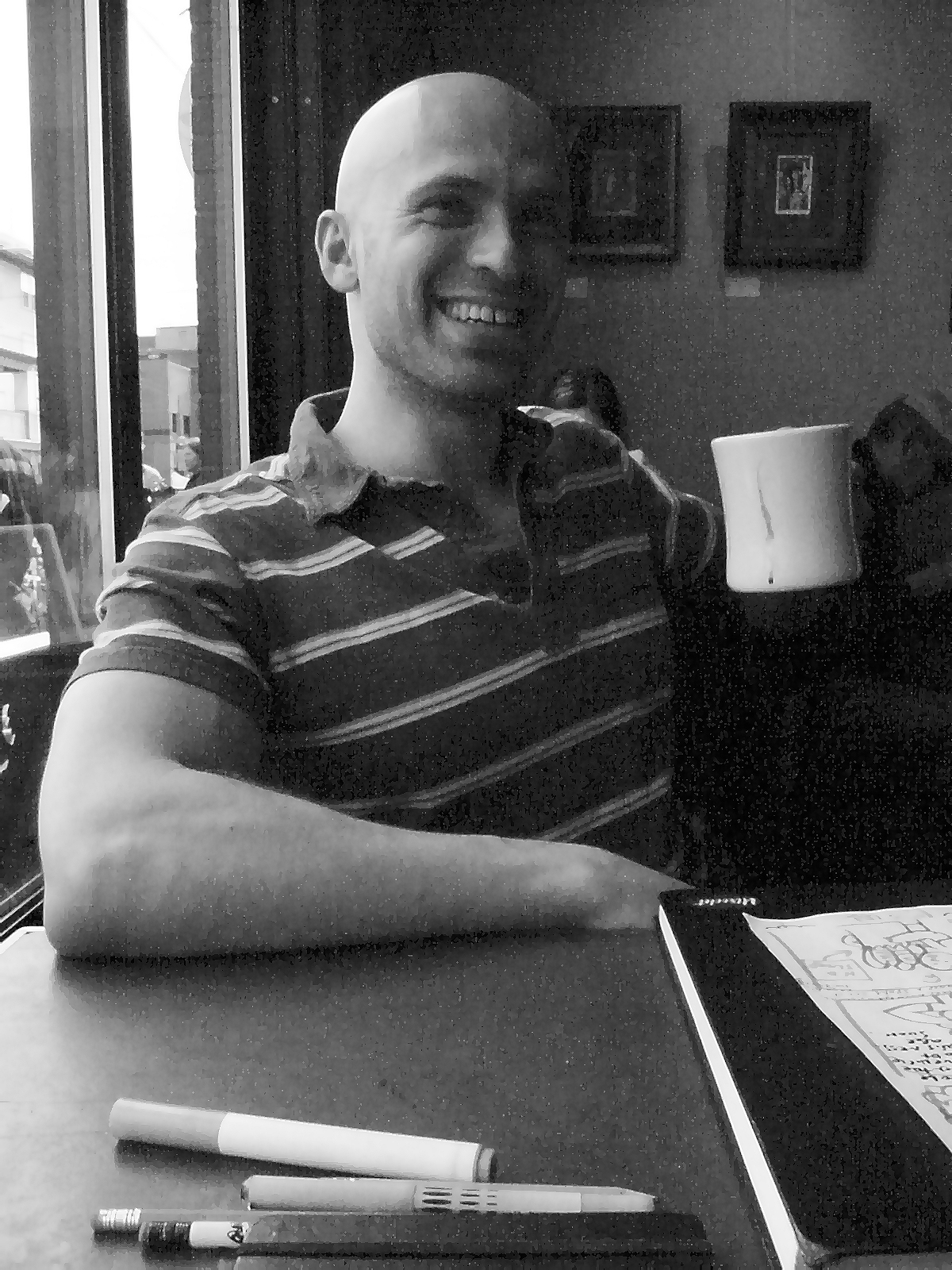
- Individual Bio or
Organizational Statement
- I’ve been working in Seattle as a teacher and freelance artist/writer for close to two decades. Currently I teach as a writer-in-residence in Seattle public schools through Seattle Arts & Lectures’ Writers in the Schools program, and through a few other organizations including Pratt, the Richard Hugo House, Seattle University, and the Frye Art Museum. (Other institutions I’ve worked with in the past include Arts Corps, Coyote Central, Powerful Schools, the Seattle Public Library, the Bellevue Art Museum, and the Kirkland Art Center.) My primary medium, for both my teaching and my artistic practice, is comics. I’ve been a regular contributor to the weekly paper The Stranger, have been nominated for multiple awards for my comic book series Urban Hipster, and recently had a graphic novel, Disillusioned Illusions, published by Fantagraphics Books.
One the best things about being a comics teacher is getting to work with students of all ages, and seeing how the same exercises and activities -- adjusted for different audiences -- can help reveal the unique power of graphic storytelling. I’m a firm believer that the comics medium is a highly accessible one, for all ages and for all levels of ability.
Grade Levels Preferred
- Grade Levels Preferred
- K-2, 3rd - 5th, 6th - 8th, 9th - 12th
Artistic Disciplines
- Discipline
- 2, 5
- Type
- I teach comics, graphic novels, and illustration.
Experience
- Previous School Partnerships
- WA State TAT Lab Graduate
- Other Trainings or Certifications
- Sample Lesson Description: Student / Classroom Residencies
- Sample Workshop Description: Teacher Professional Development
Areas of Experience and Expertise
- Approved Professional Development Provider
- 1
- Approved Classroom Residency Provider
- Yes
Lesson Plan
- Integrated Art
- Cultural Art
Teaching Approach
- Teaching Philosophy + Approach
- My approach to teaching as a guest or resident artist is to meet with the classroom teacher beforehand, determine goals and desired outcomes, and come up with a general plan for the entire run of the sessions, which I then share with the teacher prior to the first class. I always try to ascertain from the classroom teacher what skills the students already have, so that I can tailor my lessons to fit their needs.
Typically, if there are more than a few sessions planned, I’ll save the last class or two for working on individual culminating projects. When students give a sustained focus to a piece that reflects the all the skills they've learned, it makes clear how much they've absorbed as seen in their creative decisions. These pieces can then be presented and read to the class via a document camera, or collected and printed in a classroom comic book zine made by myself on the school’s photocopy machine. Getting to take home a class anthology both gives a sense of accomplishment and lets students compare the different approaches and styles of their classmates.
- Curriculum Integration Possibilities
- Most of the residencies I've done have been in a language arts context, but I've also worked with science and history teachers. I've led sessions that involved turning scientific concepts into characters and stories that helped the students understand the material they were studying. Historical curricula integrates naturally with comics, too. Students can create comics about a particular figure or period, and in the process of having to visualize the circumstances of other times and places, they'll be more apt to retain what they've learned.
The comics medium is a flexible one for integrated residencies, and it's not hard to imagine how drawing stories and processes could aid one in learning philosophy, foreign languages, math, or any number of subjects. I'm open to a wide range of possibilities.
- Special Skills and Areas of Expertise
- While I don't have any special training to work with autistic students, over the years I've had many such students in my classes (as well as in occasional one-on-one tutoring sessions) and I am consistently amazed at how effective comics are as a learning tool for this population. Many on the autistic spectrum self-describe as visual thinkers, which makes creating comics an ideal to way to develop writing skills. More than once, I've been told that a student who struggled with writing assignments was able to succeed far beyond expectations when participating in my classes, and that there proved to be lasting and definite impacts long after the residency ended.
- Testimonials from Schools
- Alicia Craven, Program Manager, Writers in the Schools. acraven@lectures.org, 206.621.2230 (x13).
Mary Whisenhunt, Language Arts teacher (6th grade), McClure Middle School. mewhisenhunt@seattleschools.org.
David Lasky, teaching artist. davidlasky@yahoo.com, 206.604.7058.
Fees
- Fees
- Fees for classroom visits vary depending on the number of hours involved and, in some cases, the time it takes me to travel to the location. For residencies, I generally charge between $70 to $90/hr. Included in that fee are the planning, preparation, and end-of-residency culminating projects that occur outside of classroom time.
Images
- Image
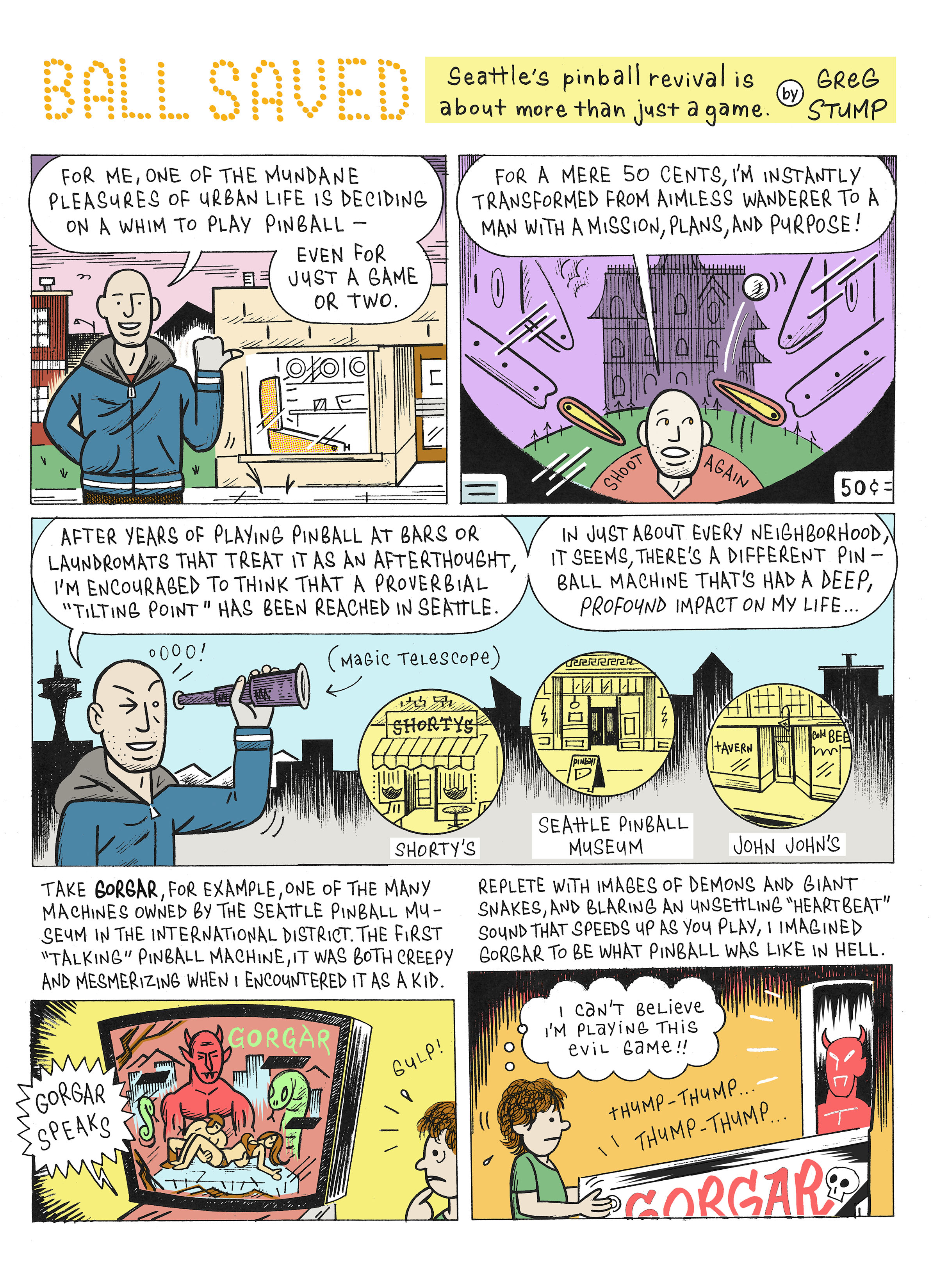
- Image Description
- This is page one of a two-page comic that ran in City Arts in 2013.
- Image
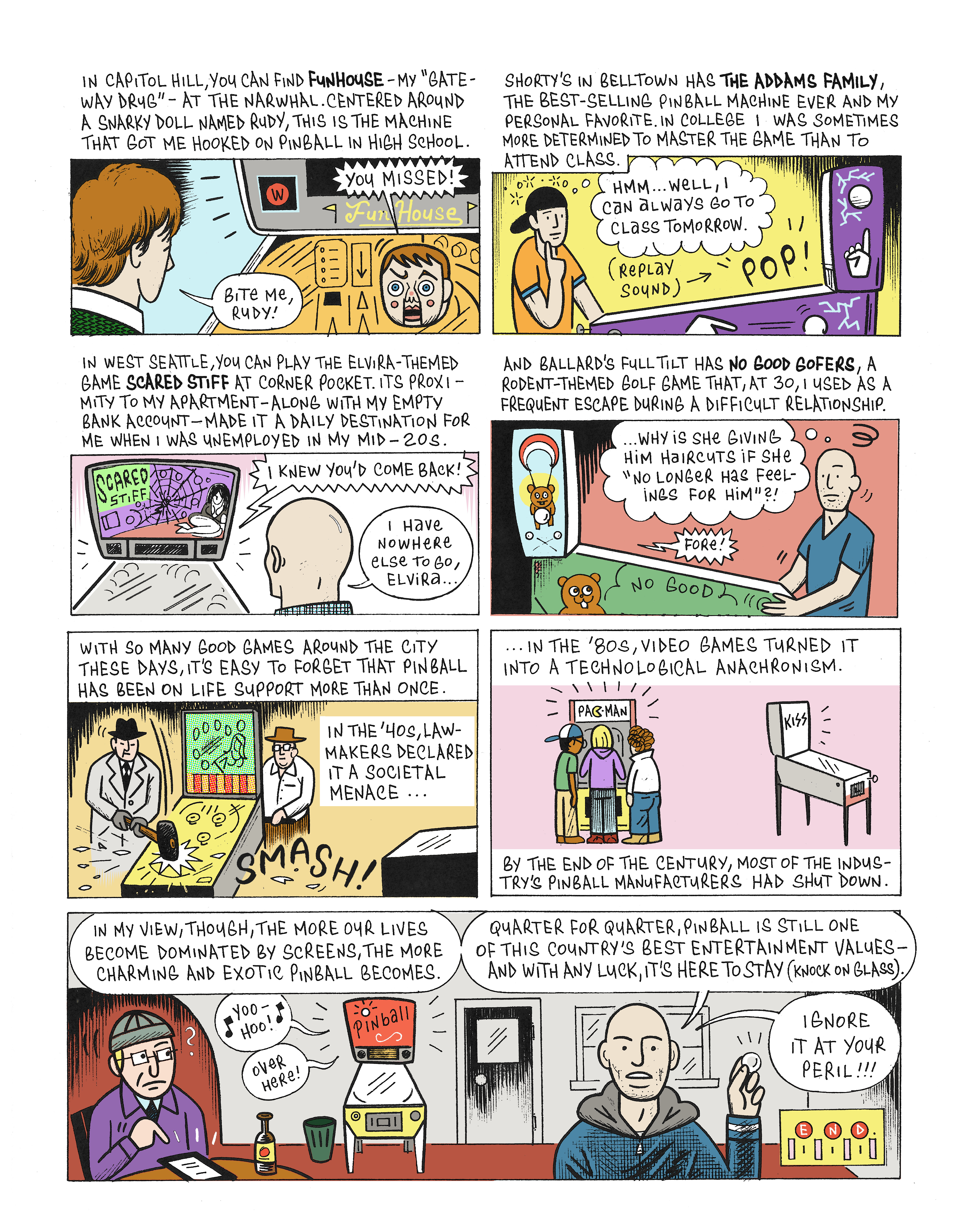
- Image Description
- Page two of the above comic.
- Image
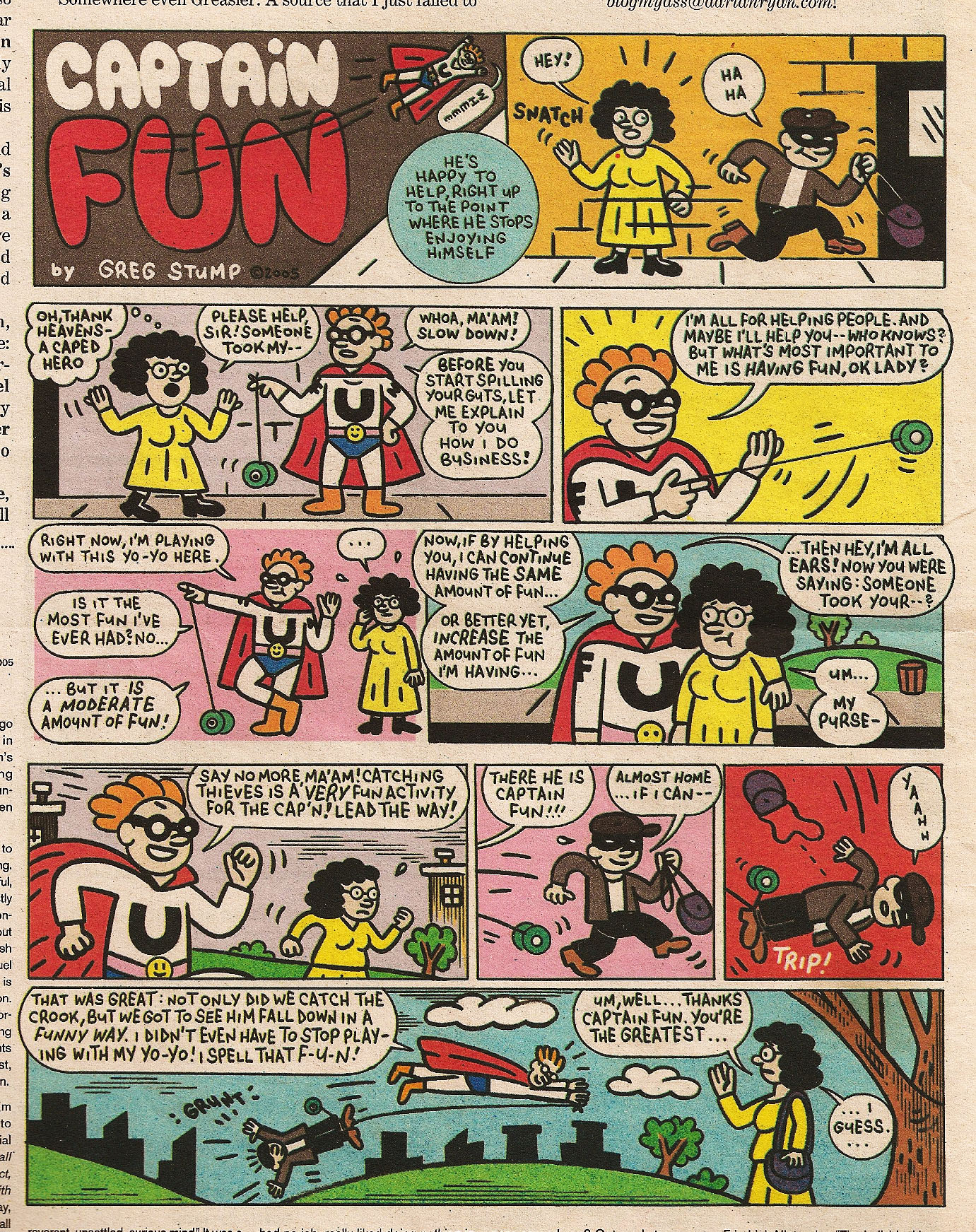
- Image Description
- This is a comic that ran in The Stranger in 2005.
- Image
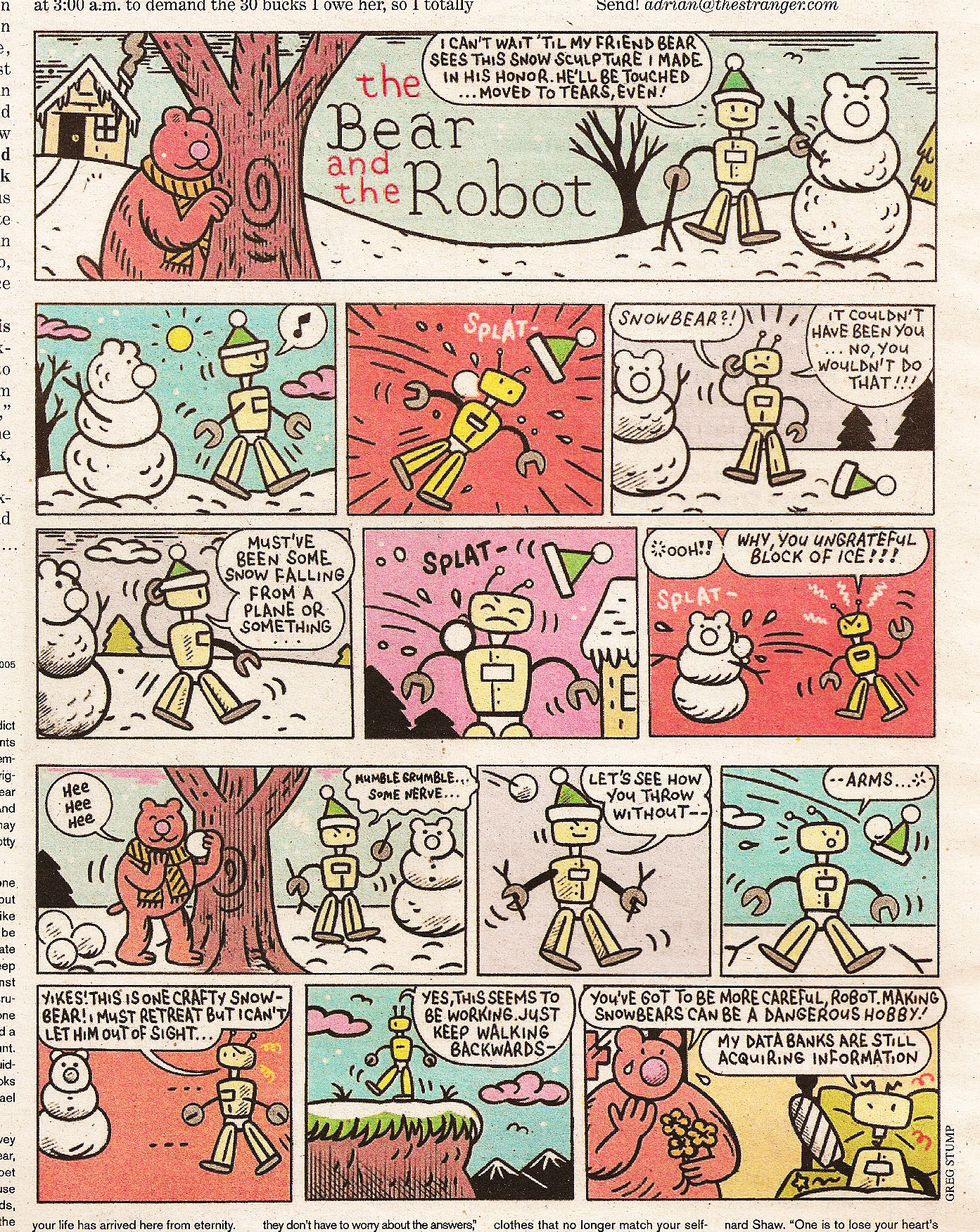
- Image Description
- Another 2005 comic from The Stranger.
- Image
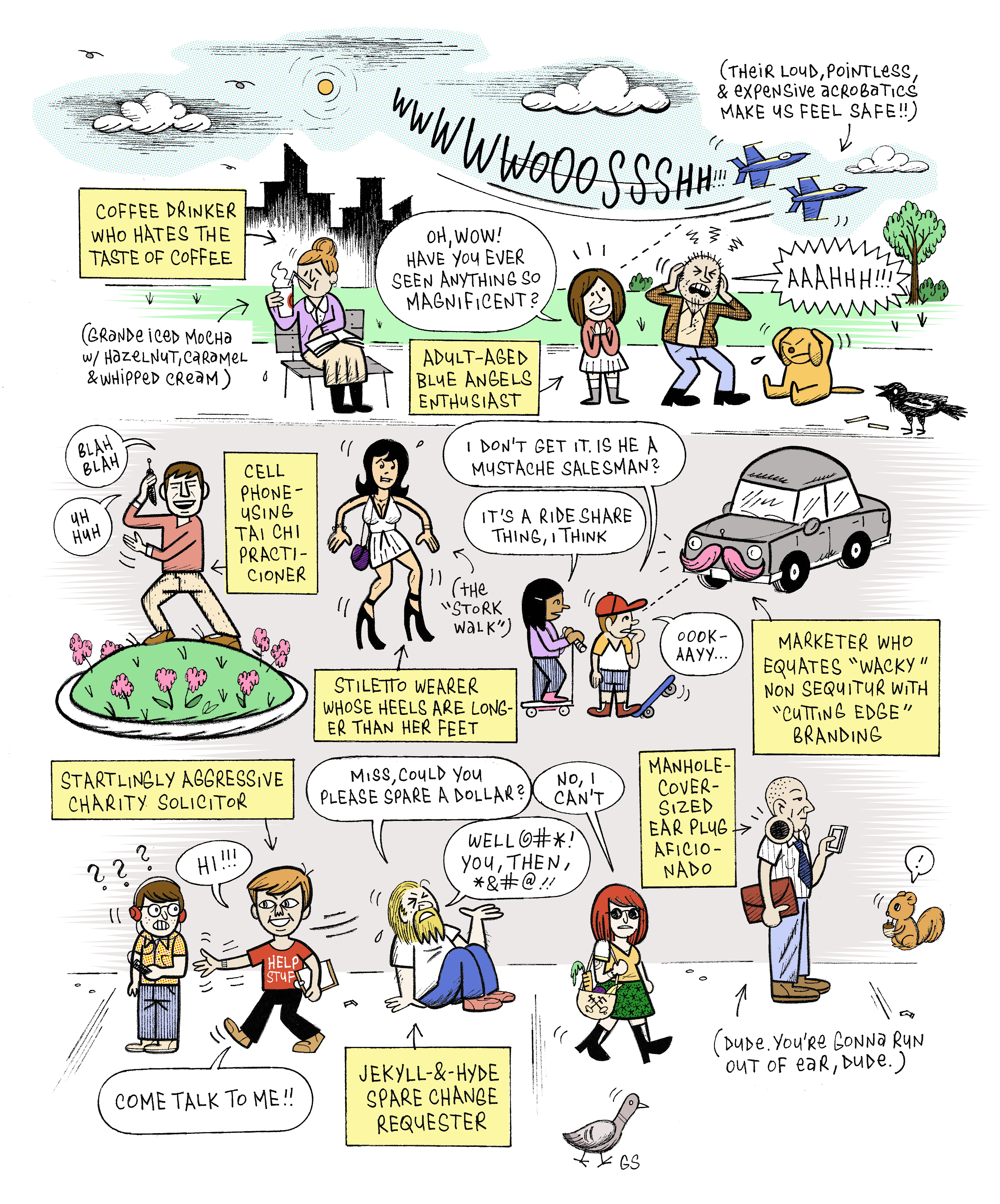
- Image Description
- This illustration ran in City Arts in 2013.





